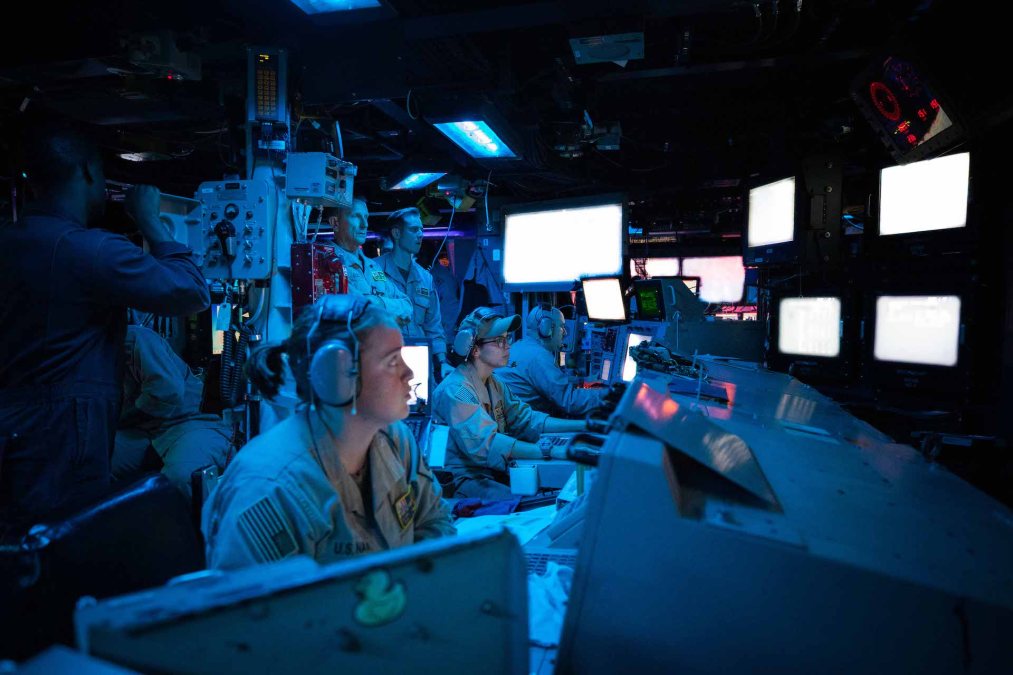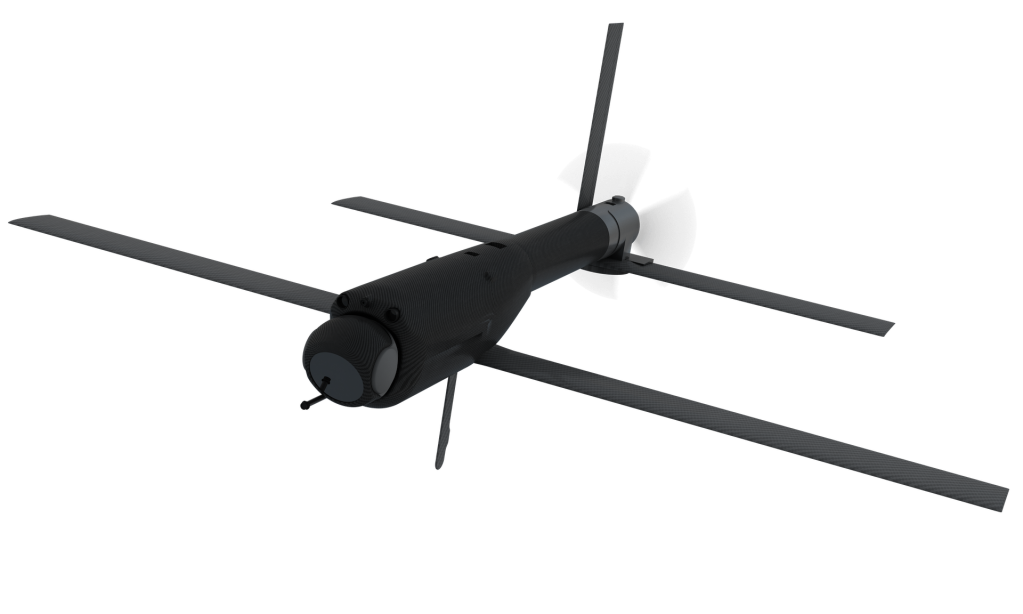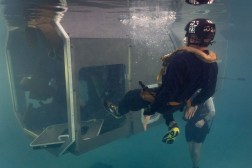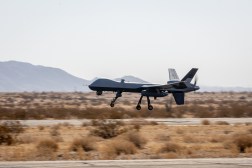US military deploys new JADC2 capability to Middle East

U.S. Central Command is using a new Joint All-Domain Command and Control (JADC2) product to help pass and digest data amid ongoing conflicts in the Middle East, according to a top officer.
The Pentagon’s JADC2 warfighting concept aims to connect sensors and shooters from across the U.S. military under a more unified network to enable faster and more effective decision-making and employment of forces, with the aid of artificial intelligence and other enabling tools. In February, Deputy Defense Secretary Kathleen Hicks announced that the “minimum viable capability” for it “is real and ready now.”
It’s already being used by Centcom, Lt. Gen. Alexus Grynkewich, commander of Air Forces Central and Combined Forces Air Component, told reporters Wednesday during a Defense Writers Group meeting. Centcom has been battling drone swarms, missile strikes and other threats in the region from the Houthis, ISIS and other groups.
“The proliferation of unmanned technologies and missile technologies, and the combination of ballistic cruise missiles, UAVs — all these unmanned things that can come at you at different speeds in different directions — does add complexity to the overall defensive architecture for how we have dealt with that. I mean it truly is a multi-domain, multi-service response that we have to orchestrate in these instances. So there’s a number of different systems that we use in the joint world to do this. Some of them are, you know, top secret systems that pull in a bunch of different intel sources together to try to build coherent understanding. The one that is new and Centcom has really been pushing and all the components are on now is the kind of the minimum viable product of JADC2,” Grynkewich said.
“I would say it’s a common operating picture that pulls in feeds from everywhere. I almost think of … the game Hungry Hippo. It is [the] Hungry Hippo of data. And it’s going out and it’s pulling in lots of data, and then you can layer it and look at it different ways. So it’s really trying to use data centricity to build understanding. The thing that that does is that synchronizes us across the domains and components to have a coherent picture. So now … my battle cabs conversations with the [Naval Forces Central] maritime ops center, they’re looking at the same basic picture,” he added.
Commanders still have to take into account the sources of the data and assess their confidence in it, he noted.
“But when you understand all of that, you can have that common picture, and now you can make real-time decisions in seconds about — is the ship going to engage that [threat]? Is a fighter going to engage it? Do we need to call one of our partners to warn them about it? Etcetera, etcetera. So that’s a key part of it,” Grynkewich told reporters.
Task Force 99

Meanwhile, Centcom’s Task Force 99 is evaluating and experimenting with new drones to help the military field cost-effective unmanned aerial systems to improve its intelligence, surveillance and reconnaissance capabilities.
The organization was stood up about a year-and-a-half ago amid a broader push by U.S. Central Command to boost its unmanned capabilities and enabling technologies.
AFCENT wants to find alternatives to very high-end drones, Grynkewich told DefenseScoop during the meeting with reporters Wednesday.
“The inventory of unmanned aerial vehicles that we have right now … all come with different price points with different capabilities. And there’s a tradeoff there, you know, more expensive/more exquisite, less expensive/less exquisite. We’re trying with Task Force 99 to find a way to thread the needle where we can use commercial off-the-shelf technologies or things that we develop in-house, to develop something that has a bit more capability than you might find on a standard off-the-shelf drone but doesn’t cost nearly as much [as high-end platforms]. And the reason you don’t want the cost to be so high is so you can sustain losses when you take them or so that you can have affordable mass and bring volume to the fight,” he said.
Grynkewich added: “So, Task Force 99 is working that very hard right now. They have a couple of promising technologies. I won’t get into exactly what they are. But … the task I’ve given them is I need them to figure out a way to flood the zone with additional intelligence, surveillance and reconnaissance so we can identify these threats … faster, better, cheaper than we can right now. They’re getting really close.”
DefenseScoop asked Grynkewich if the task force is currently aiding U.S. military operations against the Houthis in Yemen and the Red Sea.
“Their task is to develop solutions that we can apply in Yemen or elsewhere. We have used their capabilities in the [Centcom area of responsibility] in actual combat conditions before. I won’t say where it was, but we have done that before and I intend to do it again as soon as we have the right capability to apply in the right environment,” he said.
Replicator

Another Pentagon initiative that’s intended to help the department acquire more affordable “mass” is Replicator. The stated goal of the first iteration of the effort, which Deputy Defense Secretary Kathleen Hicks announced last year, is to deliver thousands of relatively low-cost, “attritable” unmanned systems across multiple domains in 18-to-24 months to help U.S. forces counter China’s military buildup.
The Army and Navy are said to be highly involved in the early stages of the project, but the Air Force not so much.
Grynkewich noted that U.S. enemies are using drone swarms and he’d like to turn the tables.
“You’re seeing that play out as adversaries are attempting to use mass to overwhelm our defenses. That’s really what it comes down to — it’s affordable mass to try overwhelm our defenses … I would like to turn that around and use affordable mass to try to overcome the defenses of adversaries as well. Replicator is trying to identify which of the solutions that we have that … is affordable but we haven’t quite figured out how to scale it,” he told reporters. “So I think that it’s a fantastic initiative of the low-cost technologies to get that affordable mass.”
Replicator is primarily aimed at countering China in the Indo-Pacific. But Grynkewich said those types of capabilities would be useful in any conflict in any region of the world.
However, he noted that he doesn’t see low-cost drones as a silver bullet.
“In my view, the flip side of it is, I don’t think that that means that some of the more exquisite weapon systems — whether they’re manned or unmanned, and irrespective of domain — are irrelevant at all,” Grynkewich told reporters.
The Air Force, for example, will still need next-generation drones like collaborative combat aircraft, he suggested. CCAs are expected to serve as robotic wingmen operating alongside manned fighter jets and also perform other missions on their own.
“You would need some exquisite … unmanned technology like a collaborative combat aircraft that’s able to do certain things. And then you can follow that with affordable mass or you can pair it with the affordable mass,” Grynkewich said. “If you do just one and not the other, you won’t really optimize the system from a warfighting perspective.”






